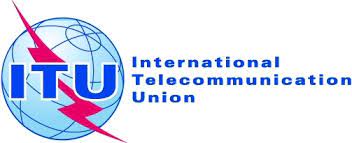With electronic waste (E-Waste) from the deployment, usage and disposal of computers, mobile phones, and TVs, among others, exponentially surging across the global landscape on daily basis, the International Telecommunications Union (ITU) has said there is a global concern over the rate at which the E-Waste is being generated.
According to the global telecom body, discarded wastes from these devices constitute a health and environmental risks based on their toxic additives or hazardous substances such as mercury, which can damage the human brain and coordination system.
The just published UN’s Fourth Global E-waste Monitor (GEM) by the ITU indicated that the world’s generation of electronic waste was rising five times faster than documented e-waste recycling.
The report showed that 62 million tonnes of e-waste generated in 2022 would fill 1.55 million 40-tonne trucks, roughly enough trucks to form a bumper-to-bumper line encircling the equator, while less than one quarter (22.3%) of the year’s e-waste mass was documented as having been properly collected and recycled.
The report further reflected that the generation of e-waste worldwide kept rising by 2.6 million tonnes annually, on track to reach 82 million tonnes by 2030, a further 33% increase from the 2022 figure but foresees a drop in the documented collection and recycling rate from 22.3% in 2022 to 20% by 2030.
It linked the projection to the widening difference in recycling efforts relative to the staggering growth of e-waste generation worldwide.
The ITU report’s findings identified the challenges contributing to the widening gap include technological progress, higher consumption, limited repair options, shorter product life cycles, society’s growing electronification, design shortcomings, and inadequate e-waste management infrastructure.
Commenting on the findings of the report, the Executive Director at the United Nations Institute for Training and Research (UNITAR), Nikhil Seth, said: “Amidst the hopeful embrace of solar panels and electronic equipment to combat the climate crisis and drive digital progress, the surge in e-waste requires urgent attention.”
Also, the Director, ITU Telecommunication Development Bureau, Cosmas Luckyson Zavazava, clarified: “From discarded televisions to dumped telephones, an enormous amount of e-waste is generated around the world. The latest research shows that the global challenge posed by e-waste is only going to grow.
“With less than half of the world implementing and enforcing approaches to manage the problem, this raises the alarm for sound regulations to boost collection and recycling”, Zavazava added.
The report estimated that if countries could bring the e-waste collection and recycling rates to 60% by 2030, the benefits, including through minimizing human health risks, would exceed costs by more than USD 38 billion.
The ITU’s report further noted that the world “remains stunningly dependent” on a few countries for rare earth elements, despite their unique properties crucial for future technologies, including renewable energy generation and e-mobility.




